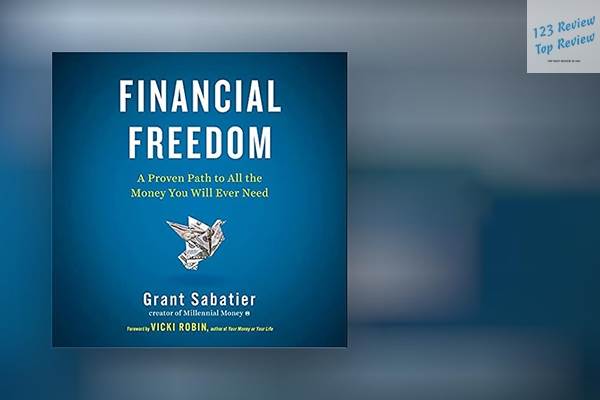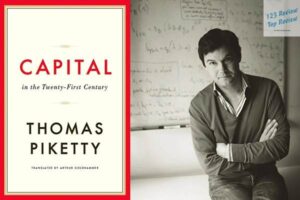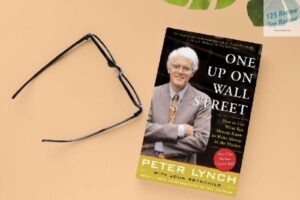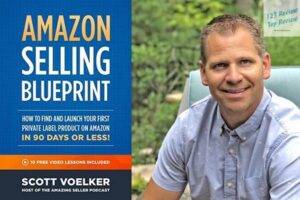Sabatier, a self-made millionaire, shares actionable strategies for saving, investing, and maximizing your income. The book covers topics such as side hustles, passive income, and smart spending habits, all designed to help you build wealth faster and live life on your terms. Whether you’re just starting your financial journey or looking to accelerate your progress, “Financial Freedom” offers practical advice and inspiration to help you reach your goals.
Understanding Financial Independence
The Concept of Financial Freedom
Financial freedom is a multifaceted concept that extends beyond the mere accumulation of wealth. It embodies the ability to live life on your own terms, unburdened by financial constraints. In his groundbreaking book Financial Freedom: A Proven Path to All the Money You Will Ever Need, Grant Sabatier delves into what it truly means to be financially free. He describes financial freedom not just as having enough money to cover expenses but as reaching a point where money is no longer a primary concern in your life.

Sabatier’s approach to financial freedom challenges traditional notions of success, which often equate long hours at work with financial security. Instead, he advocates for a life where financial resources enable personal fulfillment, whether that means pursuing passions, spending time with family, or traveling the world. The ultimate goal is to achieve a state where you are in control of your time, free from the pressures of earning a paycheck.
The Journey to Financial Independence
Achieving financial independence is a transformative journey that requires careful planning, strategic action, and a mindset shift. Sabatier’s own journey from financial instability to independence in just five years serves as both inspiration and a practical guide for others. His story begins with only $2.26 in his bank account and culminates in a multimillion-dollar portfolio, showcasing that financial freedom is attainable with the right strategies.
The journey to financial independence involves several stages, starting with a deep understanding of your current financial situation. This includes assessing your income, expenses, debts, and assets. From there, Sabatier emphasizes the importance of setting clear, actionable financial goals. Whether it’s saving a specific amount, paying off debt, or investing in certain assets, these goals provide direction and motivation.
Once goals are set, the focus shifts to implementing strategies that increase income and reduce expenses. This might involve seeking promotions, switching careers, starting side hustles, or adopting a more frugal lifestyle. Sabatier also underscores the importance of continuous learning and adaptation. As you progress on your financial journey, new opportunities and challenges will arise, requiring you to adjust your strategies accordingly.
Importance of Passive Income
One of the cornerstone principles of financial freedom, as outlined by Sabatier, is the significance of passive income. Unlike active income, which requires continuous effort, passive income generates revenue with minimal ongoing work. Sabatier explains that passive income streams are crucial for achieving financial independence because they provide a steady flow of money that doesn’t require trading time for dollars.
There are several types of passive income streams, including dividends from stocks, rental income from real estate, royalties from creative works, and revenue from online businesses. Sabatier encourages readers to explore various passive income opportunities and to start building them as early as possible. The earlier you establish these income streams, the sooner you can achieve financial independence.
Moreover, Sabatier emphasizes that passive income is not just about financial security; it’s also about freedom and flexibility. With sufficient passive income, you can choose how to spend your time without being tied down by a traditional job. Whether you want to travel, start new ventures, or simply enjoy more leisure time, passive income provides the financial support to make those choices possible.
Key Strategies for Achieving Financial Freedom
Seven Steps to Financial Independence
In Financial Freedom, Grant Sabatier lays out a clear and actionable framework for achieving financial independence. His seven-step plan is designed to be practical and adaptable, making it accessible to individuals at any stage of their financial journey. Here’s a detailed look at these steps:
- Tracking Your Spending: The first step toward financial independence is gaining a clear understanding of where your money goes. Sabatier advises tracking every expense, no matter how small, to identify spending patterns and areas where you can cut back. This awareness is crucial for taking control of your finances.
- Saving Aggressively: Sabatier advocates for an aggressive savings strategy, recommending that individuals aim to save at least 50% of their income. While this may seem daunting, he provides practical tips for reducing expenses and increasing savings without compromising quality of life.
- Increasing Your Income: To accelerate the path to financial independence, Sabatier emphasizes the importance of increasing your income. This can be achieved through career advancement, negotiating higher salaries, taking on side hustles, or investing in income-generating assets.
- Investing Wisely: Investment is a key component of wealth building. Sabatier advises diversifying investments across various asset classes, such as stocks, bonds, real estate, and alternative investments. He also stresses the importance of understanding your risk tolerance and investment goals.
- Cutting Costs: Reducing expenses is essential for freeing up more money to save and invest. Sabatier suggests focusing on high-impact areas, such as housing, transportation, and food, where small changes can lead to significant savings over time.
- Building a Safety Net: Establishing an emergency fund is crucial for financial security. Sabatier recommends saving at least three to six months’ worth of living expenses to cover unexpected costs, such as medical bills or job loss.
- Creating Multiple Income Streams: Finally, Sabatier advises diversifying your income sources to reduce financial risk. This could include developing side hustles, investing in real estate, or generating passive income through online businesses. Multiple income streams provide a safety net and contribute to long-term financial stability.
The Role of Compounding Interest
Compounding interest is a fundamental concept in wealth building, and Sabatier dedicates considerable attention to its role in achieving financial independence. Compounding interest occurs when the earnings on your investments begin to generate their own earnings, leading to exponential growth over time.
Sabatier illustrates the power of compounding with practical examples, showing how small, consistent investments can grow into substantial wealth over decades. He encourages readers to start investing as early as possible to maximize the benefits of compounding. Even modest contributions can lead to significant gains if given enough time to grow.
The key to harnessing the power of compounding is patience and consistency. Sabatier advises against trying to time the market or making risky bets in pursuit of quick returns. Instead, he advocates for a disciplined, long-term approach to investing, where the focus is on steady growth rather than short-term gains.
Saving Techniques for Wealth Building
Saving is the foundation of financial independence, and Sabatier offers a wealth of strategies for maximizing savings without sacrificing quality of life. He encourages readers to adopt a frugal mindset, focusing on value rather than cost. This means prioritizing spending on things that truly matter while cutting back on unnecessary expenses.
One of the techniques Sabatier recommends is automating your savings. By setting up automatic transfers from your checking account to a savings or investment account, you ensure that a portion of your income is saved before you have a chance to spend it. This “pay yourself first” strategy makes saving a habit rather than an afterthought.
Sabatier also advises taking advantage of employer-sponsored retirement plans, such as 401(k)s, which often come with matching contributions. By contributing enough to get the full match, you effectively receive free money, which can significantly boost your savings over time.
Additionally, Sabatier discusses the importance of reducing fixed expenses, such as housing and transportation costs. By living in a smaller home or driving a less expensive car, you can free up more money for saving and investing. He also suggests cutting back on discretionary spending, such as dining out or entertainment, and redirecting those funds toward your financial goals.
Investment Insights
Basics of Investing
Investing is a critical component of financial freedom, and Sabatier provides a comprehensive overview of the basics of investing. He begins by explaining the different types of investments, including stocks, bonds, and mutual funds, and how they fit into a diversified portfolio.
Sabatier emphasizes the importance of understanding your risk tolerance and investment objectives. He explains that while stocks offer the potential for high returns, they also come with higher risk. Bonds, on the other hand, are generally more stable but offer lower returns. By balancing these different asset classes, you can create a portfolio that aligns with your financial goals and risk tolerance.
For beginners, Sabatier recommends starting with low-cost index funds, which provide broad market exposure and are less risky than individual stocks. Index funds are a simple and effective way to invest in the stock market, offering diversification and lower fees than actively managed funds.
Sabatier also touches on the importance of asset allocation, which refers to how you divide your investments among different asset classes. He suggests periodically rebalancing your portfolio to maintain your desired asset allocation, ensuring that you’re not taking on more risk than you’re comfortable with.
Types of Investments
In addition to the basics, Sabatier delves into various types of investments that can help build wealth. These include:
- Stock Market: Sabatier discusses the potential for growth in the stock market, particularly through investing in individual stocks or exchange-traded funds (ETFs). He explains how to evaluate stocks, understand market trends, and make informed investment decisions.
- Real Estate: Real estate is one of Sabatier’s preferred investment vehicles, and he provides a detailed guide on how to get started in real estate investing. He covers the benefits of rental properties, such as cash flow and appreciation, and offers practical tips on finding the right property, securing financing, and managing tenants.
- Peer-to-Peer Lending: Sabatier introduces readers to peer-to-peer lending platforms, where individuals can earn interest by lending money directly to borrowers. He explains the risks and rewards of this type of investment and how to evaluate potential borrowers.
- Cryptocurrency: As a relatively new and volatile investment option, cryptocurrency is discussed with caution. Sabatier provides an overview of the different types of cryptocurrencies, such as Bitcoin and Ethereum, and offers guidance on how to approach investing in this emerging market.
- Alternative Investments: Sabatier also explores alternative investments, such as gold, art, and collectibles, which can diversify a portfolio and provide a hedge against inflation. He advises readers to thoroughly research these options before investing, as they often come with higher risks and less liquidity.
Building a Diversified Portfolio
Diversification is a key principle in investing, and Sabatier explains how to build a diversified portfolio that balances risk and reward. By spreading your investments across different asset classes, industries, and geographical regions, you reduce the impact of any single investment’s poor performance on your overall portfolio.
Sabatier suggests starting with a mix of stocks and bonds, tailored to your risk tolerance and time horizon. For example, younger investors with a longer time horizon might allocate a higher percentage of their portfolio to stocks, while older investors nearing retirement might favor bonds for their stability.
In addition to traditional investments, Sabatier encourages exploring alternative assets, such as real estate, commodities, and private equity, to further diversify your portfolio. He also highlights the importance of international diversification, investing in companies and markets outside your home country to reduce risk and capitalize on global growth opportunities.
Rebalancing is another crucial aspect of maintaining a diversified portfolio. Over time, certain investments may perform better than others, causing your portfolio to drift from its original allocation. Sabatier recommends periodically reviewing your portfolio and making adjustments to ensure it aligns with your investment goals and risk tolerance.
Conclusion
Grant Sabatier’s Financial Freedom offers a comprehensive roadmap to achieving financial independence. Through a combination of practical strategies, insightful advice, and real-life examples, Sabatier empowers readers to take control of their financial future. Whether you’re just starting your financial journey or looking to optimize your existing strategies, Financial Freedom provides the tools and knowledge you need to build wealth, achieve financial independence, and live life on your own terms.
By emphasizing the importance of saving, investing, and generating multiple income streams, Sabatier’s approach is both realistic and achievable. His focus on the power of compounding, passive income, and diversification makes Financial Freedom a valuable resource for anyone seeking to break free from financial constraints and create a life of abundance and fulfillment.





